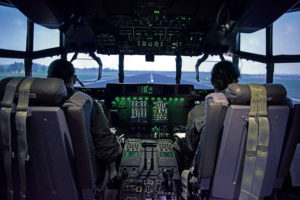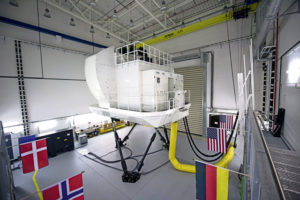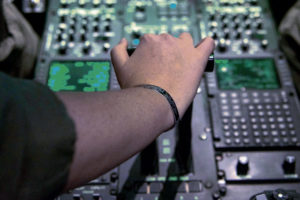
In order for pilots to be effective while flying, they must be confident in their abilities and be able to react decisively in situations that are terrifying to an untrained eye.
The 86th Operations Support Squadron maintains a C-130J Super Hercules aircraft flight simulator that provides U.S. Air Force pilots the necessary training to be qualified flyers who can successfully implement the mission in any scenario.
“The flight simulator is used to train the entire aircrew,” said Capt. Caitlin Teresky, 86th OSS flight commander. “It helps us maintain our standard proficiencies while allowing us to simulate high-risk events and emergencies that we normally wouldn’t want to experience in real life, but that we need to be prepared to react to.”
U.S. Air Force pilots can mentally prepare for in-flight emergencies by practicing flying during engine failures, low visibility or sudden high winds in a simulated environment, enabling them to increase the likelihood of their countermeasures.
“During these high-risk scenarios you have to work together as a crew, so the flight simulator allows us to do that in a low-risk environment,” Teresky said.

While in the flight simulator, pilots can practice landings, take-offs, touchdowns and respond to changes in weather and whatever threats are deemed necessary to be prepared for.
“The things you rarely see, you rarely remember,” said Brandon Cowell, 86th OSS C-130J Super Hercules aircraft flight simulator site manager, and lead pilot. “We put Airmen in situations that make them think, and that they don’t normally find themselves in. Aircrews react better in real life the more extreme scale situations they encounter in the simulator.”
Cowell believes that flight simulators are also a safe haven for pilots.
“As pilots out there on the line, you have a tendency sometimes to get bogged down in other things than flying, such as administrative responsibilities, especially the higher you go up in the officer ranks,” Cowell said. “The flight simulator allows seasoned pilots to refresh themselves on their craft in order to confidently train and maintain vital skills for newer pilots.”
With the simulator actually mimicking the turbulence and overall motion of a real C-130J Super Hercules aircraft, the 86th OSS’s flight simulator instructors can create real-time conditions during training, such as day or night settings, and inclement weather.

“The flight simulator gives us the ability to train 20 hours a day, 7 days a week. This gives us incredible flexibility to create training environments as needed,” Teresky said.
Among the many other advantages, the flight simulator can immerse pilots into thousands of airfields around the world, ultimately giving them the necessary tools and familiarity to take off and land anywhere around the globe.
“Having a simulator on site is a game-changer, it really builds the confidence of our Airmen to be effective pilots,” Cowell said. “It also cuts down the need to send aircrews to the U.S., which saves a lot of money for the U.S. Air Force as well, especially now with quarantine policies for COVID-19. We’ve never slowed down our training during this pandemic, but we’ve been overly cautious with our mitigation techniques.”
To help mitigate the spread of COVID-19, everyone entering the facility is required to wear a mask, even while training on the simulator. It is then thoroughly cleaned after each use. The instructors also conduct temperature checks for all aircrew entering the facility.
It’s estimated that having the flight simulator at Ramstein saves the U.S. Air Force approximately $500,000 in travel expenses and $3 million in fuel annually.


